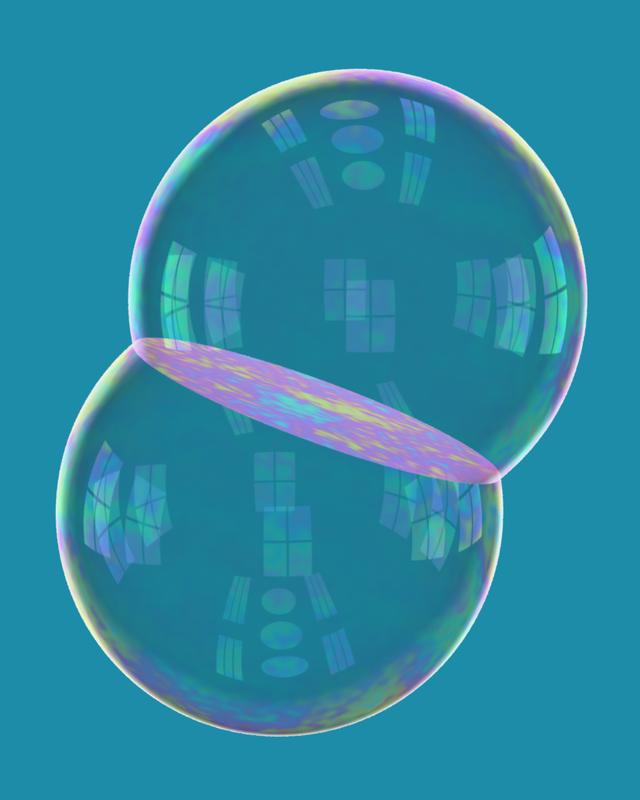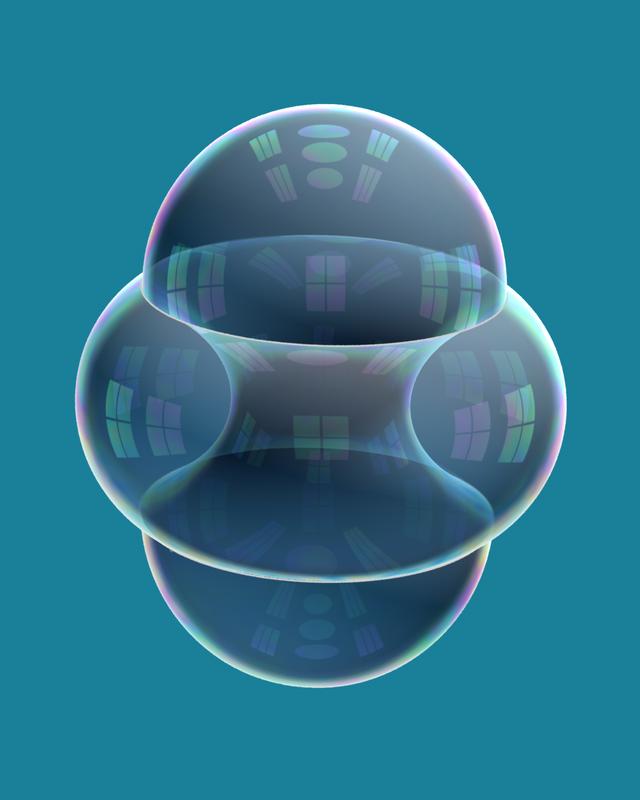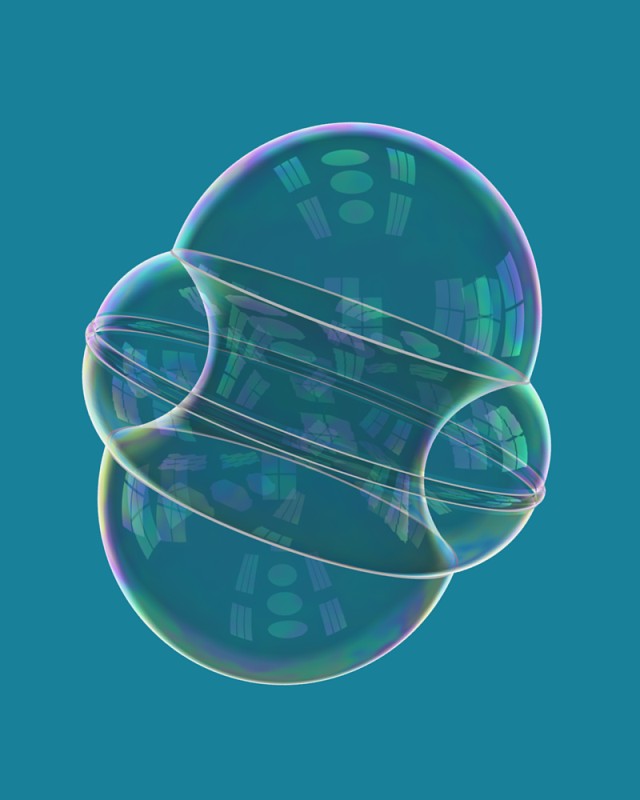

The typical strategy for trying to prove something like this is to assume that you have an area-minimizing double bubble, and show that if it is nonstandard then you can modify it to decrease area. The first difficulty is proving that an area-minimizing surface exists! This is not at all trivial, and was accomplished by Almgren in the 1970's. Also, to get an existence theorem you generally have to enlarge the space of surfaces under consideration to include some "bad" surfaces that you don't like, and then struggle to rule these out. In particular, we cannot a priori guarantee that the enclosed regions, or the exterior region, will be connected. This difficulty is partially addressed below.
The triple bubble problem in R^3 currently seems hopeless without some brilliant new idea, although again there is a natural candidate surface. Indeed there are standard enclosures of m volumes in R^n for m &le n+1, given by stereographic projections of regular simplices in spheres.
Anyway, here are some papers on this subject.
This paper is based on work done at a Research Experiences for Undergraduates program at Williams College under the guidance of Frank Morgan. I highly recommend a program like this for any undergraduate seriously considering a career in mathematics.


Some further developments: Many additional results on the double bubble problem in R^n, S^n, and H^n, and other spaces have been proved by various groups of undergraduates working with Frank Morgan. For an excellent introduction to this whole subject I recommend his book, Geometric measure theory: a beginner's guide, third edition. In 2002, W. Wichiramala solved the triple bubble problem in R^2. (Paper [1] above only solved the easier version of this problem in which the enclosed and exterior regions are assumed to be connected.)
To demonstrate our ignorance, here are three embarassingly simple open problems.
The pictures above are copyright John Sullivan.
Up to Michael Hutchings's home page.
You are vistor number to this page since my web counters got reset.